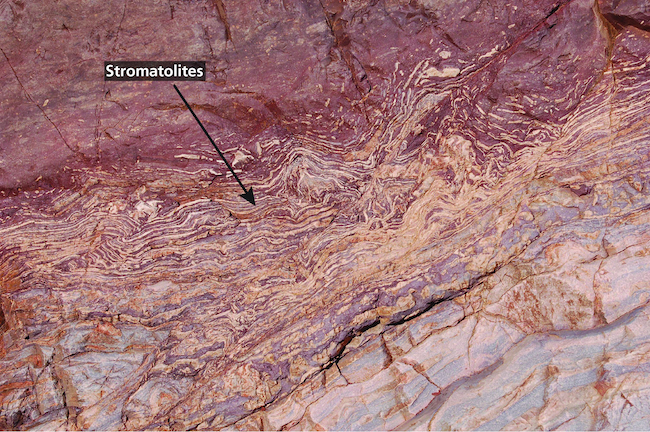Archean Eon
 |
| Stromatolites in the Grand Canyon |
Image Credit: National Park Service - Public Domain |
The Archean Eon, a geological epoch that spanned from approximately 4 billion to 2.5 billion years ago, represents a critical and enigmatic period in Earth's history. This eon, characterized by the emergence of the first continents and the evolution of early life, serves as a foundational chapter in the epic narrative of our planet's formation and development.
Formation of the Earth's Crust:
The Archean Eon began shortly after the formation of Earth itself, during a time known as the Hadean Eon. This earlier eon was marked by extreme conditions, including intense heat, volcanic activity, and frequent collisions with celestial bodies. As the Hadean gave way to the Archean, Earth's surface began to cool, and the first solid crust began to form.
The Archean was a period of profound change as tectonic processes, including volcanic activity and the accumulation of continental crust, sculpted the early landscape. Primitive oceans formed, providing a conducive environment for the emergence of life.
Emergence of Continents:
One of the hallmark features of the Archean Eon was the formation of the first continents. Initially, these landmasses were smaller and more isolated than today's continents, often referred to as "cratons." Over the course of the Archean, these cratons grew in size through processes like volcanic activity and the accretion of smaller land masses.
The development of continents was a pivotal step in creating diverse habitats for life to thrive. The interactions between the atmosphere, oceans, and newly formed landmasses set the stage for the complex ecological systems that would later evolve.
Evidence of Early Life:
While direct evidence of life from the Archean Eon is scarce due to the lack of well-preserved rocks, indirect evidence in the form of isotopic signatures and the presence of stromatolites suggests the existence of early life forms. Stromatolites, layered structures formed by microbial communities, provide a glimpse into the presence of simple, single-celled organisms engaging in photosynthesis.
 |
| AI Rendering of Stromatolites |
Image Credit: BING AI GENERATOR |
The Archean Eon laid the foundation for the evolution of life on Earth, with the emergence of these microbial communities representing a crucial step in the journey toward more complex and diverse forms of life.
Archean Climate and Atmosphere:
During the Archean, Earth's atmosphere underwent significant changes. Initially, the atmosphere lacked free oxygen, creating a reducing environment. However, the emergence of photosynthetic organisms, such as cyanobacteria, contributed to the release of oxygen as a byproduct of their metabolic processes. Over time, oxygen levels gradually increased, setting the stage for the oxygen-rich atmosphere we have today.
